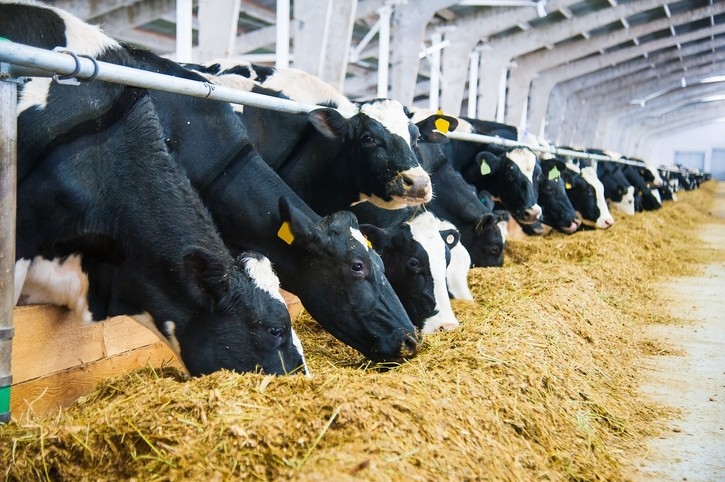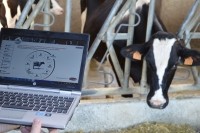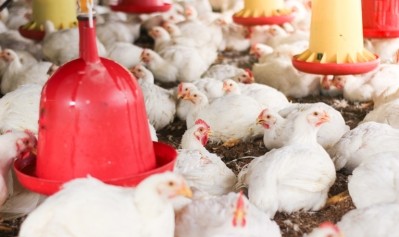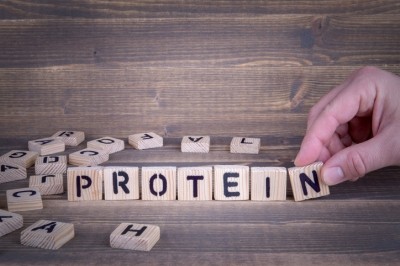Lallemand optimizing rumen efficiency measuring tools

"The beef REI mobile app might likely be finalized before the dairy one,” Aurelien Piron, technical manager ruminants, Lallemand Animal Nutrition, told us.
Lallemand launched a desktop based version of the REI audit tool around 18 months ago.
The goal of livestock producers, evidently, is to maximize income over feed cost. “Feed efficiency comes from the capacity of the rumen microbes to digest the diet and the aim of all the tools we are providing is to help the on-farm advisors to fine tune nutrition to ensure the highest possible income over feed cost for the dairy farmers," continued Piron.
Using a holistic approach, the company said its REI platform allows on-farm consultants to examine various parameters from cow rumination activity to body condition to locomotion to animal cleanliness and dung consistency, as well as animal performance and environmental indicators like temperature and humidity.
DM measurement
Essentially, on-farm nutrition advisors or sales technicians, using the REI, can review a dairy herd in 45 minutes and then inform the farmer what they need to do in terms of diet adjustment or on-farm management or the use of additives to improve, if necessary, their cows’ rumen efficiency, said Piron.
“When we talked to farmers, we saw that a lot of them are not able to measure dry matter (DM) intake, which is one of the most important parameters for determining cow rumen efficiency, so that factor was the prompt for the development of the REI.”
The audit tool allows uniform measurement of rumen efficiency regardless of diet or the farm environment:
“When we discussed rumen efficiency audits with nutritionists, we saw that everyone had their own way of evaluating [challenges] like acidosis, and poor fiber digestibility. So this is another reason why we developed this tool, to have a very standard way of assessing rumen efficiency on farm.”
REI is a good tool to show where farms could improve rumen efficiency, across different regions and conditions, he added.
Training
Lallemand, through its so-called rumen school or rumen exchange, carries out regional training sessions for on-farm advisors, throughout the world, on how to use the REI assessments.
“The objective is to be as close as possible to our feed industry partners, to help them with their on-farm service provision.”
Next stop for Piron in relation to such training is Tunisia. Sessions have already taken place across the globe, in markets such as Brazil, Japan and South Africa as well as in European countries, he said.
The training is very local, and takes account of particular conditions in a given market.
Data analysis
Lallemand said it has collated data from 400 audits carried out in 25 countries, which indicated that rumination is suboptimal in 69% of the farms reviewed.
“We analyze that data and can now better understand how rumen efficiency is evolving in relation to diet.”
The effect of heat stress on rumen efficiency was also a focus of that data set.
“Audits performed under a high temperature and high humidity environments demonstrated a depression of milk fat to protein ratio, and other parameters were also modified,” said Piron.
Lallemand launched a website last year to provide continuous information related to rumen efficiency as well as data on cow intestinal health.
Gut-brain-axis
In terms of next research steps for Piron, he told us:
“We are now working a lot on making the link between the rumen and the rumen wall and what happens beyond – what is the impact on the inflammatory status of the animals and, more generally, on the animals’ behavior.”
He said research around the gut-brain-axis, which has taken hold in human nutrition, also offers tremendous scope for the livestock sector to better understand how animals react to different challenges and, armed with the knowledge, to optimize production. That is something Lallemand is hoping to dig deeper into.
The gut-brain-axis is said to be the bidirectional communication between the microbiome within the digestive tract and the brain.
The company is also partnering with the French national research agency, INRA, on a symposium on rumen acidosis in Clermont-Ferrand, in France in September.















